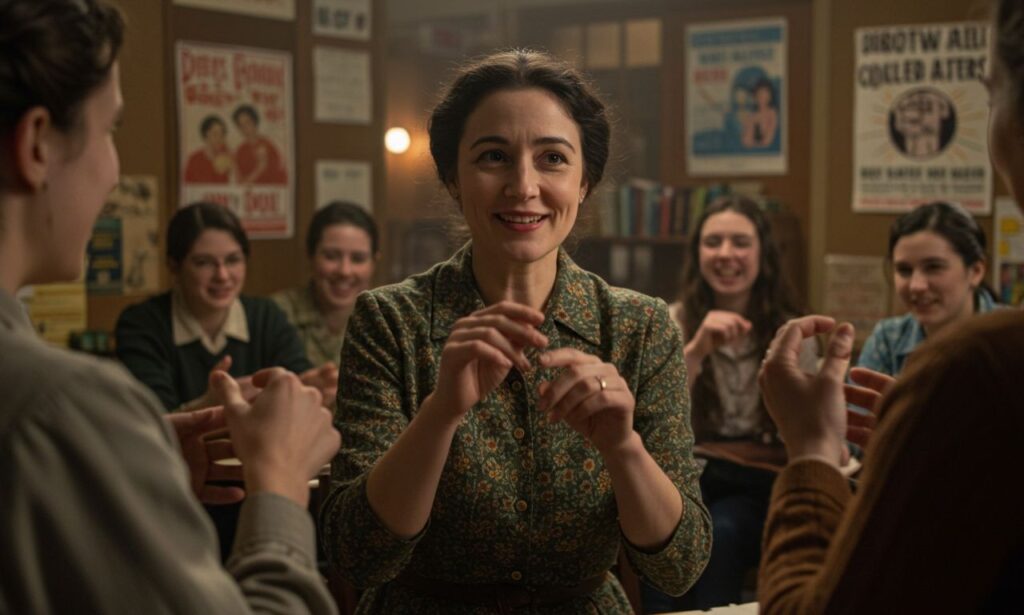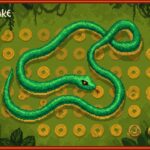Dorothy Miles was a brilliant Deaf poet, performer, and activist who forever changed the way we understand sign language literature. As a pioneer of sign language poetry in both British Sign Language (BSL) and American Sign Language (ASL), she broke down cultural barriers, transformed public attitudes, and empowered generations of Deaf individuals to embrace their language and identity.
Born in North Wales in 1931, Dorothy Miles led an extraordinary life that merged art, education, and advocacy. Despite personal challenges, including mental health struggles, she devoted her life to enriching Deaf culture, promoting BSL, and developing educational tools for Deaf learners. Her story remains one of triumph, talent, and trailblazing vision.
Dorothy Miles Early Life and Deafness
Dorothy Miles, born Rosemary Dorothy Squire on August 19, 1931, in Gwernaffield, North Wales, lived an ordinary childhood until age eight, when she contracted meningitis. The illness left her profoundly deaf, a life-altering shift that introduced her to the world of silence—but also opened the door to a lifetime of expressive visual language.
Following her deafness, Dorothy attended the Royal School for the Deaf in Manchester and later the Mary Hare Grammar School in Newbury. These institutions emphasized oralism, discouraging the use of sign language in favor of lip-reading and speech training. While these policies were common at the time, they contributed to an identity crisis for many Deaf students, including Dorothy. It wasn’t until adulthood that she would fully embrace BSL and become one of its greatest champions.
Education at Gallaudet University in the United States
Dorothy’s educational journey took a remarkable turn in 1957 when she was awarded a scholarship to Gallaudet University in Washington, D.C.—the only university in the world designed specifically for Deaf and hard-of-hearing students. There, she found a vibrant Deaf community and immersed herself in English literature, sociology, and theater.
Her time at Gallaudet was transformative. She became actively involved in student publications, developed her poetry, and graduated with distinction in 1961. Dorothy also briefly married fellow student Robert Miles during her college years. Although their marriage lasted only a short while, she kept the name Dorothy Miles for the rest of her life.
Gallaudet played a vital role in shaping Dorothy’s career. She was introduced to ASL (American Sign Language), which profoundly influenced her poetic style. At Gallaudet, she discovered that sign language could be both a tool for communication and a medium for artistic performance.
The National Theatre of the Deaf and Artistic Breakthrough
After graduation, Dorothy joined the newly formed National Theatre of the Deaf (NTD) in the United States. There, she flourished as a writer, performer, and publicist. The NTD’s mission to use sign language in drama allowed Dorothy to explore poetry and storytelling in visual form.
This period marked a turning point in her creative life. Dorothy began composing bilingual poetry—crafted in both English and ASL. She developed a unique style where the rhythm and emotion of her signed poetry were in harmony with her written words. Through performance, she elevated sign language into a recognized and respected literary art form.
Her poem “Language for the Eye” is one of her best-known works, exploring the visual beauty of sign language and its power to convey emotion, narrative, and cultural identity. It remains a cornerstone of sign language literature, studied in Deaf culture and literature classes worldwide.
Return to the UK and Launching a Cultural Movement
In 1977, Dorothy returned to the UK after two decades in the U.S. Her return coincided with a growing movement for Deaf rights and BSL recognition. She immediately became a central figure in this cultural awakening.
One of her major contributions during this time was her involvement in British television. Dorothy helped produce and appeared on BBC’s “Open Door” and later “See Hear”—a pioneering series aimed at Deaf audiences. These programs used BSL, breaking new ground for Deaf representation in mainstream media.
Dorothy also helped develop the first BSL tutor training course with the British Deaf Association (BDA). She authored the book British Sign Language: A Beginner’s Guide, a foundational text for learners and teachers alike. The guide was published alongside a BBC educational series, making BSL accessible to thousands of learners across the UK.
Sign Language Poetry in BSL and ASL
Dorothy Miles is credited with developing the genre of sign language poetry. Her poems were unique in that they could be experienced in three forms—spoken English, BSL, and ASL. Each performance was a symphony of movement, emotion, rhythm, and visual storytelling.
Unlike written poetry, her BSL and ASL works used facial expressions, hand shapes, body language, and spatial references to deliver nuanced and dynamic performances. She showed that sign languages were not just communication tools but fully-fledged artistic languages.
Her influence was immense. She inspired a generation of Deaf poets, including UK-based artists like Richard Carter and Paul Scott, and American ASL poets like Clayton Valli and Ella Mae Lentz.
Dorothy Miles the Educator and Activist
Dorothy believed that language was the key to empowerment. She taught poetry, literature, and sign language to both Deaf and hearing students. She conducted workshops and wrote training materials to equip BSL tutors and Deaf educators.
Her activism extended beyond education. She championed the legal recognition of BSL, equal access to education for Deaf children, and Deaf representation in the arts. She also advocated for the Deaf community’s right to express themselves in their native language without discrimination.
Dorothy was ahead of her time in recognizing the intersection between language rights and human rights. She constantly emphasized that BSL and ASL were not inferior to spoken language but unique expressions of cultural identity.
Mental Health Struggles and Final Years
Despite her many accomplishments, Dorothy faced personal challenges. She battled with bipolar disorder and chronic depression throughout her adult life. The pressures of being a cultural leader, combined with the lack of mental health support for Deaf individuals, took a toll on her well-being.
In 1993, at the age of 61, Dorothy Miles died by suicide. Her passing sent shockwaves through the Deaf community and beyond. While her death was a tragic loss, it also brought attention to the importance of mental health support within the Deaf community.
Dorothy Miles Legacy and Honors
Dorothy Miles left a lasting legacy that continues to inspire artists, educators, and activists. After her death, the Dorothy Miles Cultural Centre was established to continue her work promoting sign language education and awareness. The center evolved into Dot Sign Language, a UK-based organization offering BSL courses and Deaf awareness training.
In 2024, she was honored with a Purple Plaque on her childhood home in Rhyl, Wales—an award recognizing remarkable Welsh women. That same year, Google celebrated her 93rd birthday with a Doodle animated by Deaf artist Youmee Lee. The Doodle portrayed Dorothy performing her poem “Language for the Eye,” introducing millions of people to her work.
Conclusion
Dorothy Miles lived a life of deep creativity, courage, and cultural leadership. She pioneered a new genre of poetry, uplifted the status of BSL and ASL, and brought visibility to Deaf culture across two continents. Her legacy lives on in every signed poem, every Deaf-led classroom, and every young artist who sees language as a beautiful, visual, and powerful form of expression.





